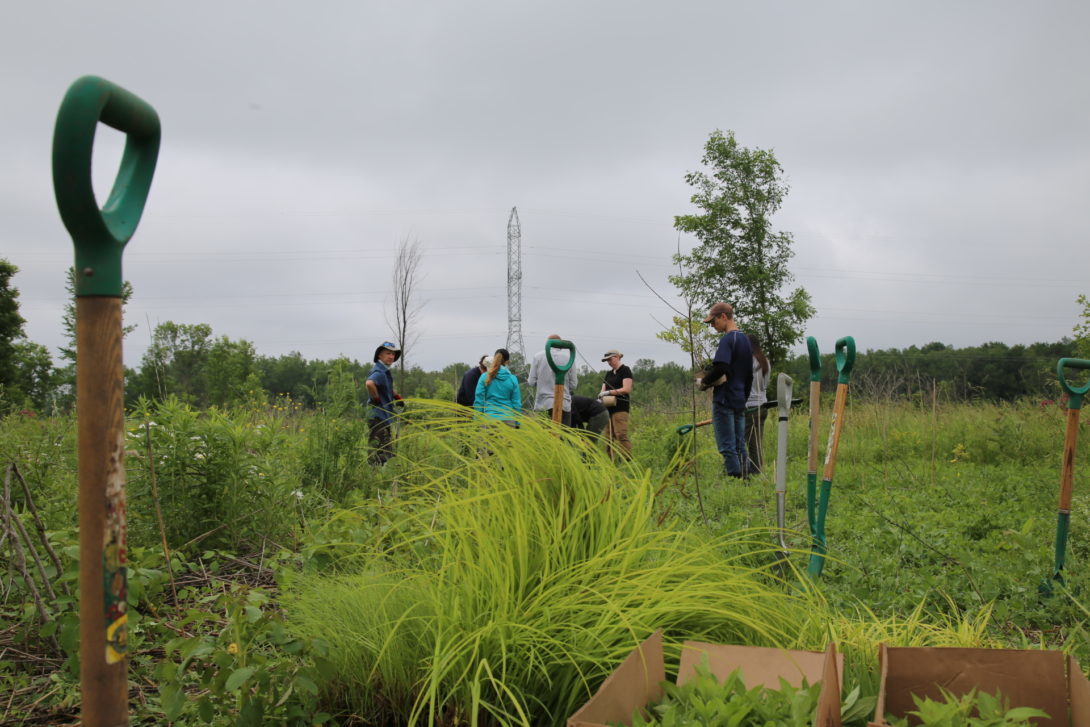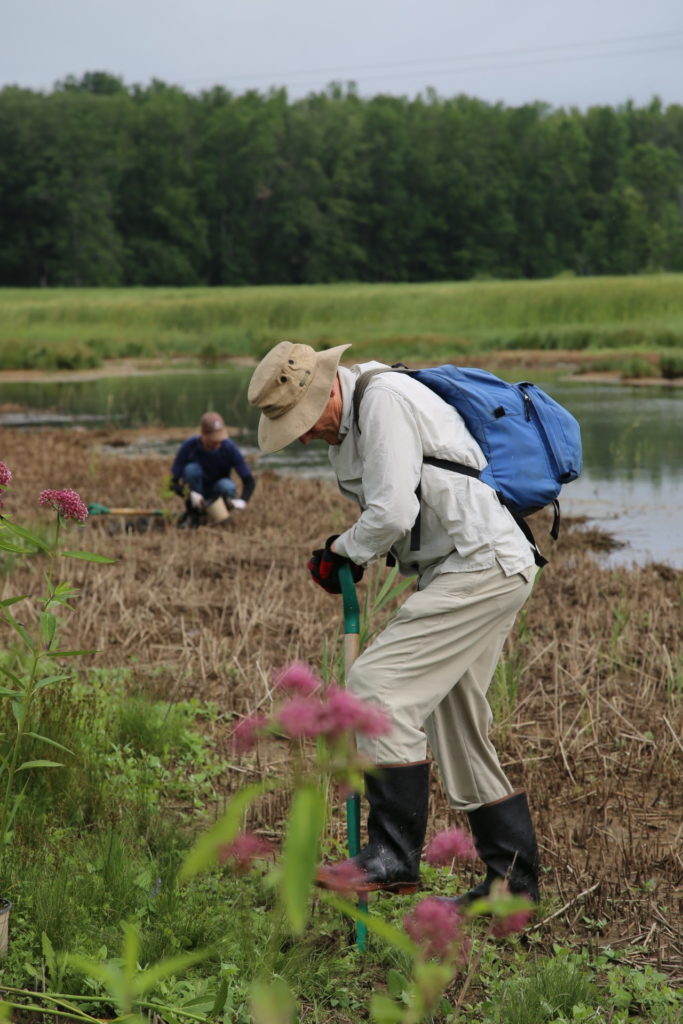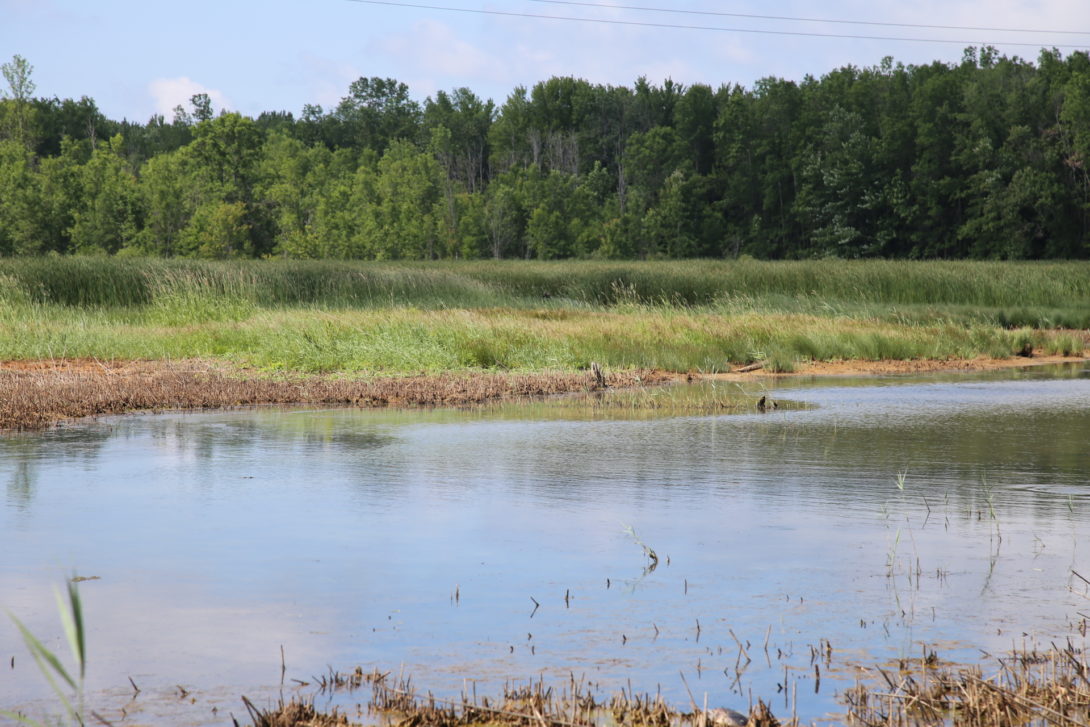Restoring Utopia: How one group’s watershed work helps wildlife and hinders climate change
An hour north of Toronto, in Utopia, ON, the Nottawasaga Valley Conservation Authority (NVCA) has been working hard to live up to the town’s name, creating safer and healthier communities by making their 3,700-square-kilometre watershed more resilient to climate impacts, urban growth and other threats.

As part of the Nature and Climate Grant Program’s (NCGP’s) first field season, the NVCA’s multifaceted “Take a Load Off” project reduced agricultural and development pressures on the Nottawasaga Valley watershed, which feeds 18 municipalities, three counties and Lake Huron.

By engaging landowners, farmers and volunteers, NVCA was able to improve habitat for biodiversity and climate mitigation. They planted carbon-sequestering trees and seeded grasslands for at-risk birds like the bobolink and Eastern meadowlark and improved manure storage and livestock fencing to reduce pollution runoffs into rivers and streams, benefiting trout, salmon, Northern Brook lamprey and endangered Lake sturgeon.
They worked so hard that they quadrupled their planting target (putting 79,000 native trees and shrubs in the ground), more than doubled their target of restored habitat (with 81 hectares restored) and almost doubled their target for planting native grasslands (with 16.8 hectares planted). Combined, these restoration activities are now also expected to store 300 per cent more carbon than initially estimated.
Using the power of nature
As our latest Living Planet Report Canada made clear, the multiple threats affecting Canadian species means that conservation actions targeting only a single threat are very unlikely to successfully stop and reverse wildlife loss.
And with wildlife loss and climate change so closely intertwined, conservation efforts must tackle both crises at the same time.
That’s why the Nature and Climate Grant Program, presented by Aviva Canada, is focused on nature-based solutions like restoring degraded habitats, to both sequester carbon and safeguard wildlife.
The program now offers multiyear grants, and NVCA is back for the second round. It plans to build on last season’s momentum and carry out stewardship projects aimed at restoring another 99 hectares of wetland, river, forest, and grassland habitats.

They’ll be planting even more native trees and shrubs in forests and wetlands as well as using agricultural practices that create healthier, carbon-rich soils, which are more resilient to erosion and drought.
In the Upper Nottawasaga river and Sheldon creek, they’ll also be collaborating with the Georgian Bay Métis community on tree planting and riverbank stabilization.
The ultimate goal is to cultivate “spongier” landscapes, making them more efficient at mitigating floods and sequestering carbon, while helping to recover the region’s biodiversity.
Through NVCA and their fellow Nature and Climate Grant Program recipients, WWF-Canada is supporting critical work throughout the country with meaningful, long-term benefits for local ecosystems, communities and the climate.
Read More: Nature and Climate Grant Program
Sowing change: How Canadian farmers are addressing the biodiversity and climate crises
Q&A: How agriculture can drive restoration
Act Locally: How to make your yard more nature-friendly with native shrubs
Act Locally: How to De-Pave Your Property
Meet 6 groups restoring biodiversity (and storing carbon) across the country

